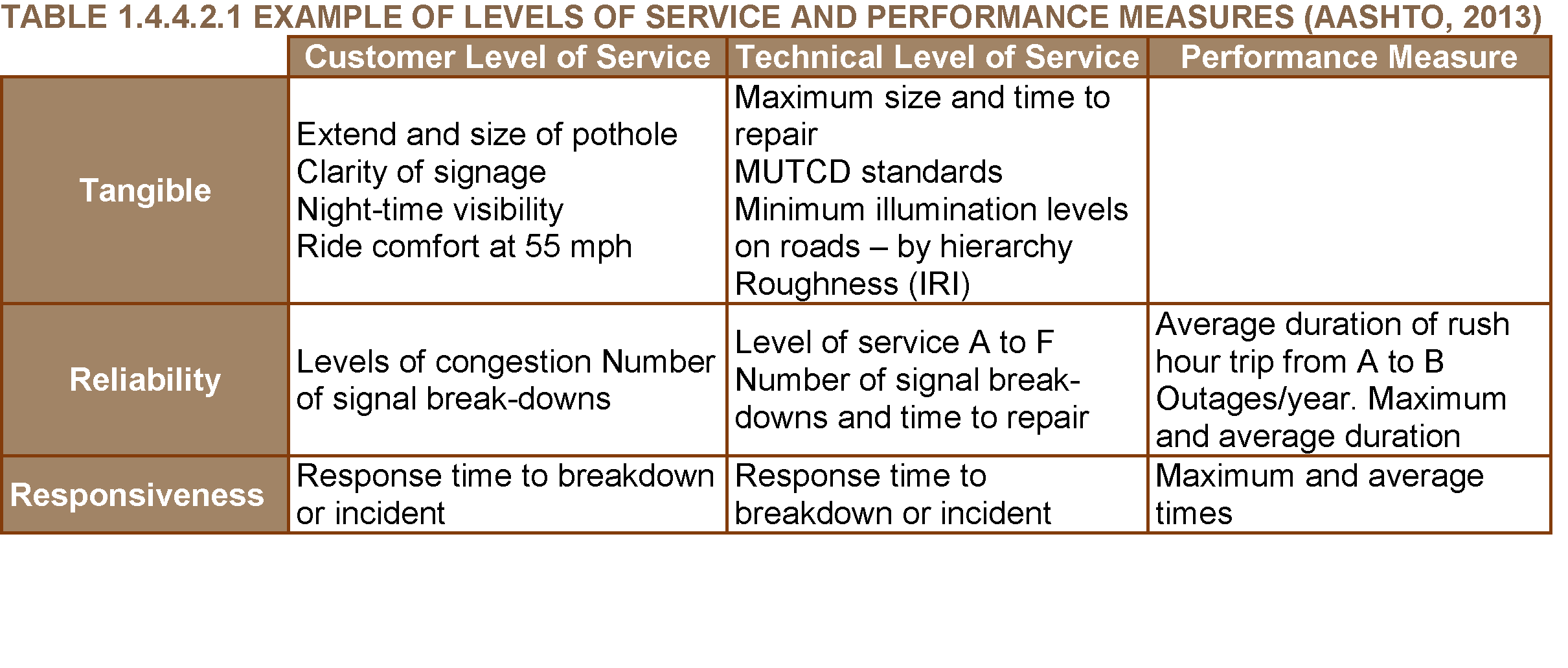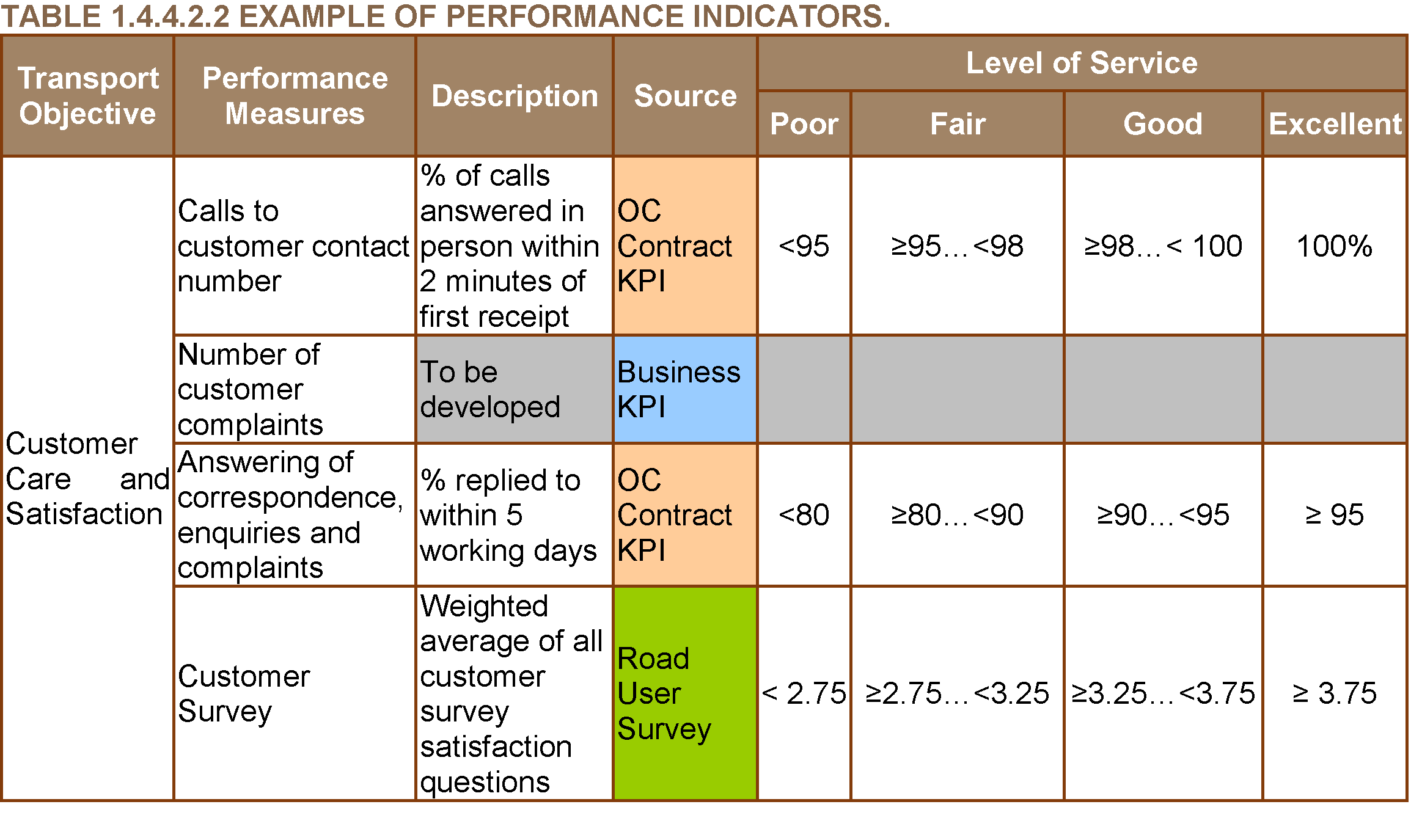
Asset Management Manual
A guide for practitioners!

Asset Management Manual
A guide for practitioners!
Each level of service should be supported by a set of performance measures (see figure 2), which will enable to measure both individual aspects of performance as well as the overall level of service.
Two type of measures are of interest:
It is relevant to distinguish between the condition and performance of an asset:
Usually, for each level of service, a number of performance measures are chosen, and the process to evaluate them generally involves the aggregation of raw data (objective and subjective, quantitative and qualitative), as shown in table 1.4.4.2.1.

Definition of Performance MeasureVarious performance measures are usually required to represent a single level of service, but they might be aggregated in a key performance indicator (KPI) to describe the level of service. It may be appropriate to use different weighting factors for each of the performance measures that contribute to a level of service or KPI (e.g. condition of footways may have a greater weighting than condition of white lines).
Performance measures are used to monitor whether authorities/agencies are meeting the levels of service and to report the actual performance. They are usually numbers or scores that have meaning to relevant staff, and are calculated transforming raw data. They may be technical and non-technical
Typically, performance measures may include both engineering and non-engineering considerations (for example based on results from public opinion surveys). There are four type of performance measures:
The steps for identifying performance measures generally include:
The logical starting point for the development of performance measures is to identify what aspect of performance is being measured.
Indicators suitable to be used as performance measures should be:
One of the basic considerations in developing performance measures is to maximize the use of existing data and minimize the need for collection of additional data.
The SMART approach may be used in selecting actual performance measures. This approach evaluates the following attributes for candidate measures:
Once performance measures are selected, it is advisable that:
Typical sources of data and other information used to define performance measures may include: public opinion surveys (letters, e-mails, calls and blogs), business reporting, operational reporting, existing inventory data, performance data (including condition) and financial reporting.
In relation to KPIs, Working Group 2 (Management Indicators) of a past PIARC Technical Committee on Asset Management (cycle 2008-2011), put some effort into identifying the existing management indicators as well as the lack of indicators when necessary (PIARC 2012). Table 1.4.4.2.2 shows some examples of the work carried out by this committee.

Random Auditing: Audits can include customer satisfaction surveys, sample condition surveys and ad hoc inspections. Random audits are frequently used to independently audit the performance of Highway Authorities/Agencies who are working under quality management systems. Their purpose therefore is to provide an independent crosscheck on performance.As far as the frequency of measures is concerned, consideration should be given to the balance between the cost of collecting the monitoring data and information and the risks of not having the information available. This is particularly important when considering compliance with statutory obligations and demonstrating value for money. The most commonly used ways of carrying out performance measurement are: